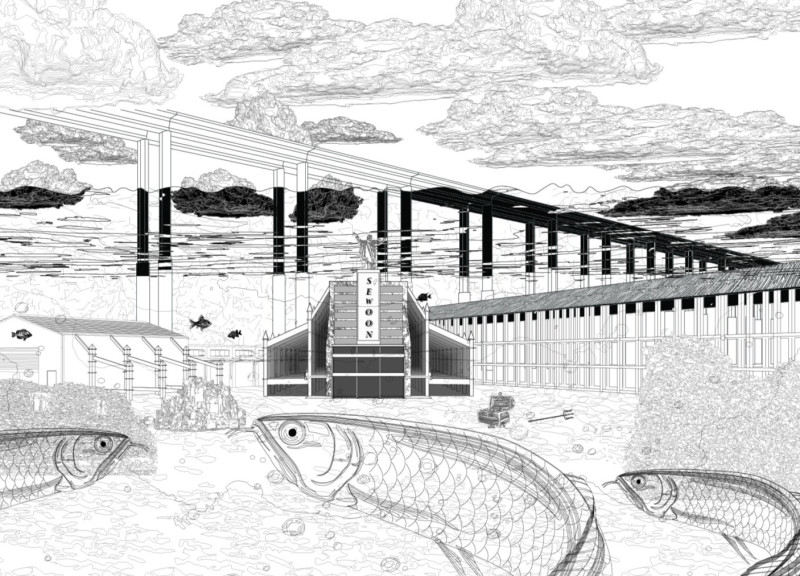5 key facts about this project
The "Memorial for the Exiled City" is an architectural project located in Seoul, South Korea. It serves as a reflective space dedicated to honoring the stories of displacement within the historical context of the city. The design aims to resonate with the city’s layered identity, integrating elements that represent both the past and its contemporary urban challenges. This project functions as a memorial and community engagement area, fostering interaction and reflection among visitors.
The design incorporates various structural forms, reflecting both monumental and modular characteristics. Key features include large concrete forms that provide structural integrity while framing smaller, flexible spaces that adapt to different uses. An emphasis is placed on connectivity, with water features and landscaped areas seamlessly blending into the surrounding environment, creating pathways for both memory and movement.
Unique Design Approaches
One of the noteworthy aspects of this project is its juxtaposition of materials. Reinforced concrete is used for primary structures, symbolizing permanence and stability. This is balanced by the integration of glass and wood, which introduce transparency and warmth into the design. The use of steel allows for significant structural complexity, facilitating intricate connections that enhance the overall spatial experience.
The incorporation of water elements serves not only an aesthetic purpose but also a symbolic one, representing fluidity and change in identity. The design also focuses on creating flexible spaces that can accommodate various community activities, ensuring that the memorial remains relevant to current and future generations. This adaptability is a crucial design strategy, distinguishing it from many traditional memorials that often remain static over time.
Architectural Details
The project’s layout is thoughtfully arranged to promote exploration and reflection. Public gathering spaces are interspersed throughout the site, encouraging interaction among visitors. Key pathways connect different areas, facilitating movement and engagement with the memorial's various components. The arrangement of structures enhances visual ties to both the immediate context and the broader urban fabric, reinforcing a sense of belonging within the city’s narrative.
For those interested in understanding the finer aspects of this project, including its architectural plans and sections, a thorough examination of the presented architectural designs is recommended. This exploration will provide deeper insight into the architectural ideas that define the "Memorial for the Exiled City."



















































